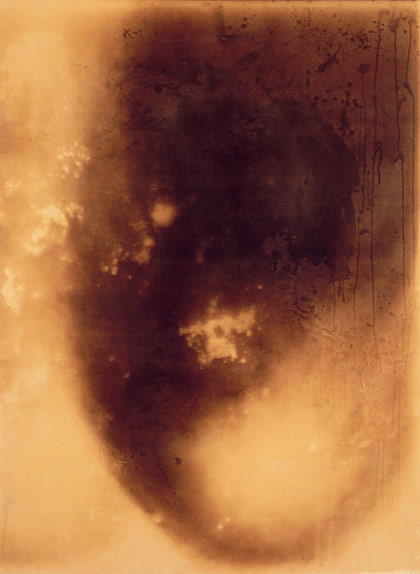Fr : version française / En: english version
mheu, Historical Museum of the Urban Environment
Untitled Painting of Fire (F 74)
Yves Klein

1961
139.5cm x 102.3cm
National Museum of Modern Art in Paris - Centre Georges Pompidou
© Photo CNAC / MNAM, Dist. RMN / All rights reserved
View this work in the Fire exhibition
Yves Klein
Painter of the intangible, Yves Klein was born in 1928 to a family of artists in Nice. After his early career as a Judoka, he took up the family tradition. His first monochromes, painted with a roller, caused widespread consternation. His work was rejected by the Salon des Réactions Nouvelles in Paris in 1955. But Yves Klein persevered with his work. In 1956, he patented the famous "International Klein Blue", a magnificent ultramarine blue which he used throughout his career. A fan of happenings, Yves Klein considered the artistic position to be as important as the work of art itself. In his Anthropometries, it was the print of the body itself, covered with blue pigment and pressed against the canvas, that became the work of art. In 1960, the artist was involved in defining the Nouveau Réalisme (New Realism) movement, the Constitutive Declaration of which was signed by figures such as Jean Tinguely, Niki de Saint Phalle, César and Arman. He died suddenly two years later.
Untitled Painting of Fire (F 74)
Having worked on the void, the air, the wind and water, from 1961 Yves Klein conducted several studies on fire at the Gaz de France testing centre. In order to capture the living trace of fire, the artist subjected large canvases sprinkled with water to flames from an industrial blowlamp, which blackened them in a different way in different places. He then used the same technique again with the canvases on which young women had left the print of their damp bodies. The filmed representation of the artist at work itself came to be seen as a work of art.